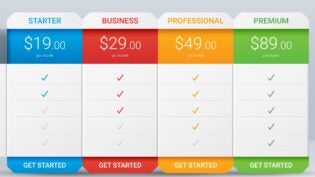
Hold onto your outbursts of, “Dave, you’ve lost it!” Also, recognize that I may be playing a few word games—but with a purpose.
I’ve become distressed with the state of thinking about “Value Propositions.” Too often, they are viewed as the “silver bullet.”
Wishful thinking like, “If I just get the right value proposition, it will overcome any doubts or resistance a customer has, they’ll issue a purchase order….”
I get requests for help, “Can you help me create a killer value proposition?” As if there is the one thing that will cause the customer to be interested.
People thinking of the value proposition as the elevator pitch. And the list of things go on and on.
In thinking about this post, I read a lot of other posts about value propositions. There are an amazing number of posts focused on the “structure of the value proposition,” outlining, concepts like, “If you state it this way,” or “If you frame it this way,” or “Here is the formula for a killer value proposition…” Ultimately each resulting in a scripted set of words, that may have meaning to us, but probably have very little meaning or relevance to the customer.
The problem is the “proposition” part—the idea that we can reduce the value we create and the value the customer should expect to one or two pithy sentences—is absolutely meaningless. In fact, trying to encapsulate the process in a couple of sentences, means we have to eliminate most of the value that can be realized.
We have to be thinking of an ongoing process, a series of conversations that begin with our very first contact with a prospect, different for each person involved in the process, and which builds through the customer buying process, on into the implementation process.
Each conversation is different, but builds on previous conversations. Value created/developed builds through the process. Whether it’s the value in helping the customer buy or the value ultimately created with the solution.
Initially, customers get value in their discovery of opportunities to change, to do something different, either eliminating problems, identifying areas to improve, or seeing new opportunities. As their journey progresses, the value is building on that first step; collaborating as a team within their own organization, aligning disparate goals, agendas, objectives. It builds as they define what they want to do, growing further as they evaluate alternatives.
In this early part of the journey, each person in the buying process defines value differently. Through the entire decision-making process the value each sees and the value the group sees changes. As they discover and learn more.
Related Article: Create a Value Proposition by Knowing Your Target Audience
It reaches a peak, and is probably most aligned when they make a decision. At that moment, the concept of value changes subtly from what they are learning and discovering to a set of expectations and specific goals each expects to achieve through the implementation of the decision.
The journey continues after the decision, in leveraging the solution to produce the results and changes they expected. Again, it has different dimensions for each person but it is measured against specific goals established in making the decision.
The agile sales person guides the customer team through this journey. Helping them discover and realize value at each point of the way. The sales person makes sure that value is neither assumed nor taken for granted by each person involved in the process. But it is carefully developed, consistently communicated in terms that are meaningful to the customer.
In the end it is not a single statement, “You will achieve these results…..” But it is a unique collection of discoveries and attainment of goals through the entire process. It is unique for each individual and different for every buying process. While the sales person may facilitate many customers on similar journey’s the value is unique in each one.
So value cannot be conveniently summed up into one or two sentences. It cannot be glibly applied to every customer. As an example, think of your own journey through school. You went through similar things with your classmates, you heard the same lectures, sat in the same workshops, did the same work, took the same tests. But what each individual got through that process was different. Hopefully, there were skilled teachers helping each student get the most—not the same—through each step of the process.
Value discovery/creation/development/communication is similar through the buying process. Like the teacher, great sales people make sure each customer understands and getting the most they can at each step.
It’s time to abandon the concept of the value proposition, instead mastering the skills in helping each person we work with achieve the most they can through their buying process.
This article was originally published by Partners in Excellence
Published: April 21, 2015
2130 Views
2130 Views












